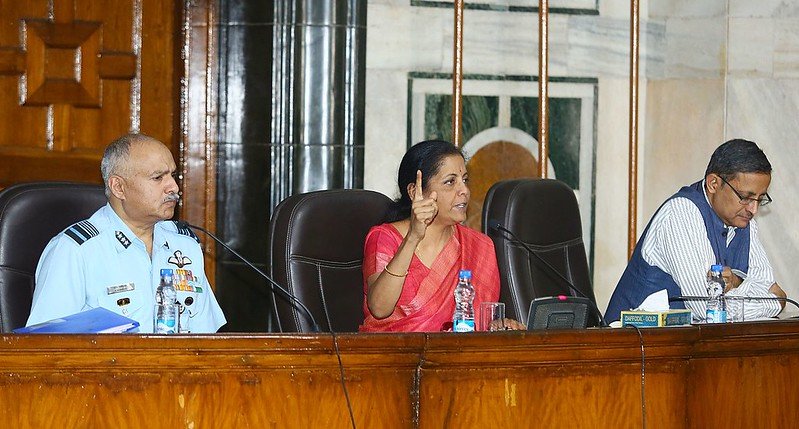
India’s GDP Surges, Signaling Resilience and Promise
Photo credit:Quick Spice under CC licence
India’s latest GDP figures have brought a welcome surprise, with a robust growth rate of 8.4 percent in the December quarter. This surpasses earlier forecasts of 6.6 percent and marks the highest growth rate since the second quarter of 2022. The Ministry of Statistics and Programme Implementation’s projection of a 7.6 percent growth for the entire 2023-24 fiscal year signifies a remarkable turnaround for the Indian economy.
What makes these figures even more noteworthy is the diverse landscape of growth across sectors. The manufacturing sector, with an impressive surge of 11.6 percent, indicates a resilient industrial base, which bodes well for India’s ‘Make in India’ initiative. At the same time, the agricultural sector’s growth of 3.8 percent showcases the sector’s adaptability and the efforts to modernize farming practices. This balanced growth story highlights the significant contributions of both industry and agriculture to the nation’s economic resurgence.
However, beneath the headline figures, there are nuanced shifts in specific sectors that demand attention. The dip in agricultural growth by 0.8 percent in the third quarter, compared to the previous 1.6 percent growth, underscores the need for sustainable agricultural reforms. Challenges such as supply chain disruptions and changing weather patterns call for measures to ensure the long-term stability of this crucial sector.
On the other hand, the mining sector’s growth of 7.5 percent, though slightly down from the previous quarter, indicates a continued appetite for the nation’s mineral resources. The construction sector’s growth of 9.5 percent, albeit lower than the previous quarter, reflects the ongoing infrastructural developments across the country. Investments in public utilities, as evidenced by the 9 percent growth in electricity and other utilities, further strengthen India’s infrastructure backbone.
Additionally, the encouraging growth of 6.7 percent in trade, hotels, transport, and communication points towards a revival in consumer confidence and business activity. This growth suggests that India’s economy is recovering from the impact of the pandemic, and people are regaining trust in the market.
However, amidst this optimism, a note of caution resonates. The Reserve Bank of India’s vigilant stance on inflation remains crucial. As the economy gains momentum, it is essential to maintain a delicate balance between growth and price stability. The RBI’s decision to hold interest rates steady reflects a cautious approach to ensure that inflation remains within the targeted 4 percent.
Looking ahead, sustaining this growth trajectory will require concerted efforts. Continued investment in infrastructure, reforms to enhance ease of doing business, and support for small and medium enterprises will be key drivers. Moreover, fostering innovation and digitalization across sectors can further propel India’s economic resurgence on the global stage.
In conclusion, India’s GDP surge is not just a set of numbers; it represents a narrative of resilience, adaptability, and promise. It is a testament to the nation’s ability to navigate challenges and emerge stronger. As the world grapples with uncertainties, India’s growth story stands as a beacon of hope, showcasing the immense potential of its economy and the determination of its people to forge ahead.
As we celebrate these numbers, let us also recognize the work that lies ahead. By fostering an environment that nurtures growth, embraces innovation, and ensures inclusivity, India can continue on this path of economic revival, charting a course towards prosperity for all its citizens.
